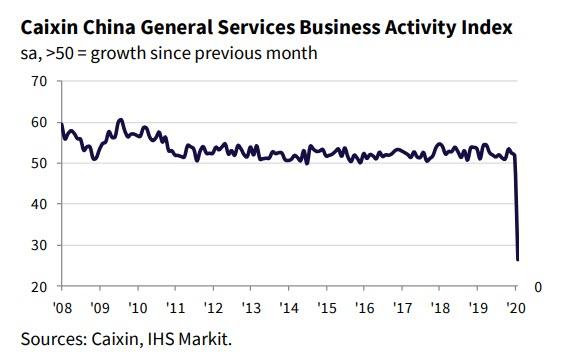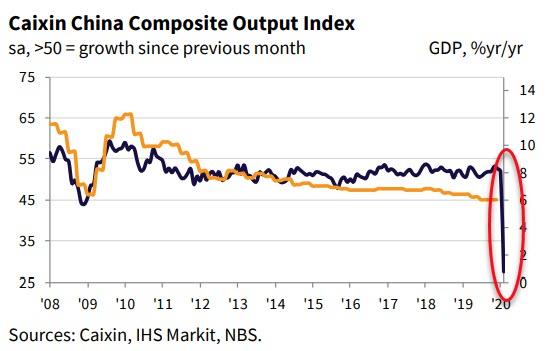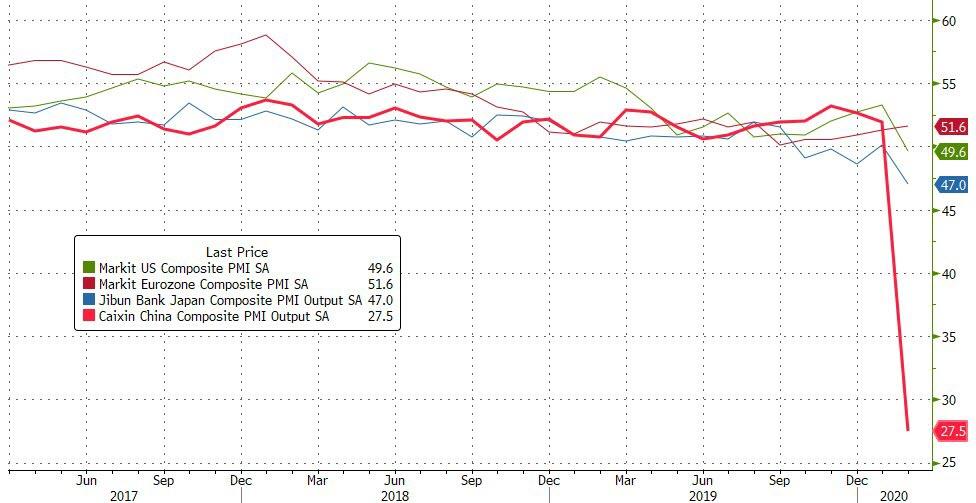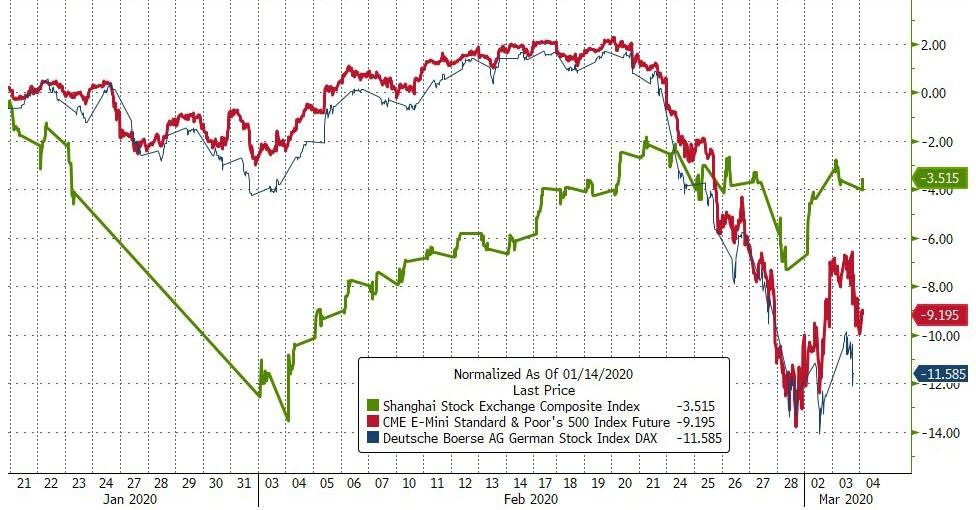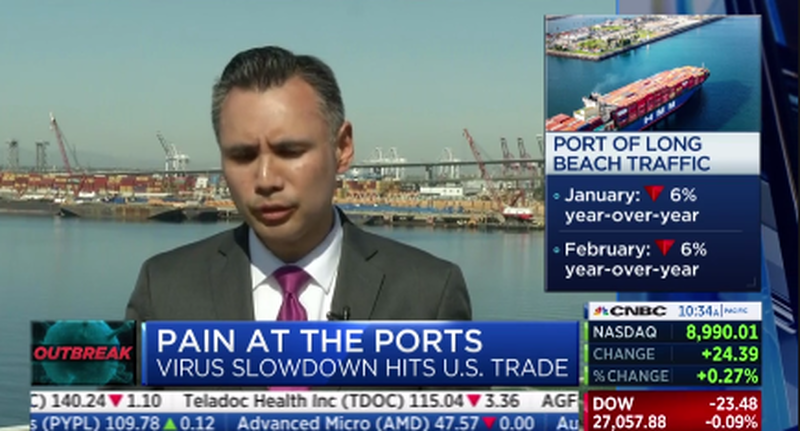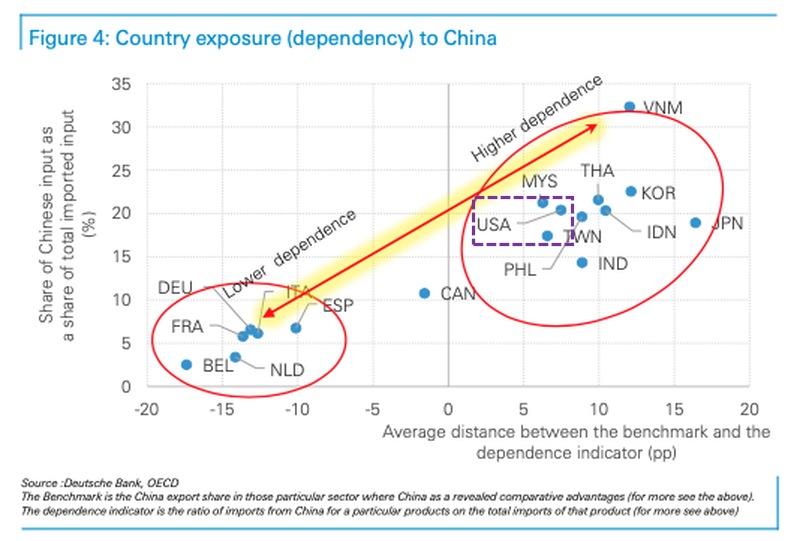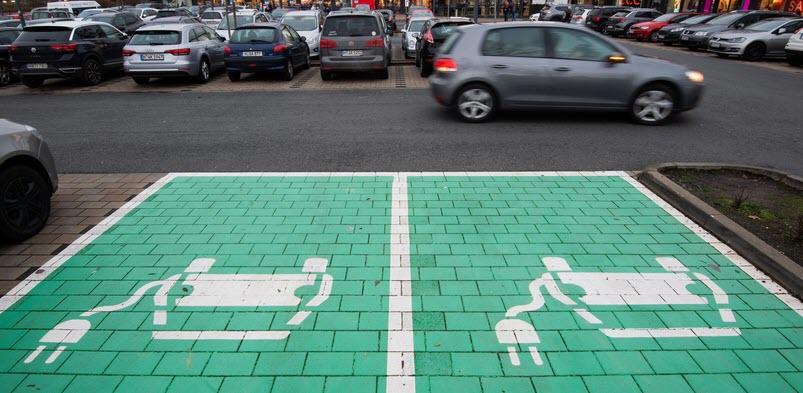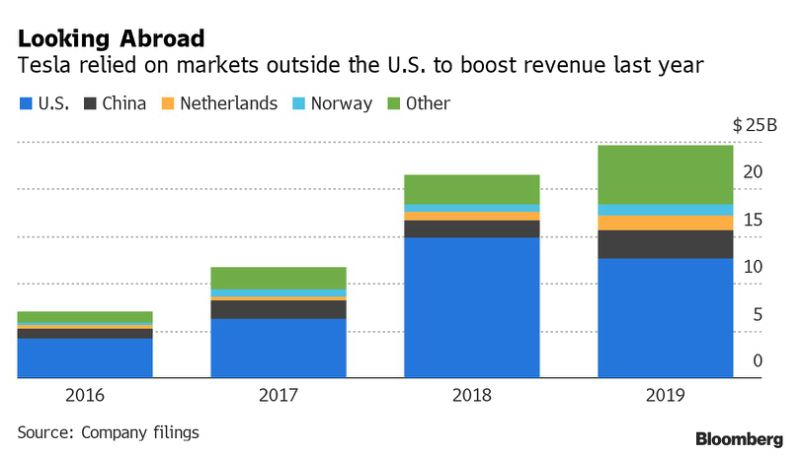After several years of monetary madness—artificially lowering interest rates to the extent all asset prices are distorted—the world is slowly waking up to the fact that printing money by central banks is a one-way street. Once central banks enter this trajectory (and they have), they can't reverse. Markets have become addicted to cheap money, and central banks feel compelled to print more when the economy, or stock market, weakens. The Federal Reserve, the issuer of the U.S. dollar, is trapped too. Possibly, a paradigm shift in the international monetary system will transpire during the coming economic downturn, and the dollar will lose its status as the world reserve currency.
Some analysts proclaim the next world reserve currency is standing ready to replace the dollar. This would be the Special Drawing Right (SDR), issued by the International Monetary Fund (IMF). According to my analysis, though, the SDR isn't capable of being the world reserve currency. It will never be much more than a unit of account.
If you ask a random financial expert what an SDR is, he or she is likely to say, "It's a currency issued by the IMF, comprising a basket of the world's most important currencies." Based on this definition, some analyst forecast the SDR will replace the dollar. But, from examining the anatomy of the SDR, it appears it's not a currency and there is no free market to exchange them. Which is problematic.
Introduction
The SDR is a "supplementary international reserve asset" that was created by the International Monetary Fund in 1969. At first, it was defined as 0.888671 grams of gold. By denominating it in a fixed weight of gold, some thought SDRs were backed by gold. Alas, SDRs were created out of thin air and then given a gold exchange rate, but they could not be redeemed for gold.
In 1974, after the collapse of Bretton Woods, the SDR's value was redefined based on a basket of currencies. But, again, the SDR was not backed by these currencies. Rather, the SDR's valuation was, and is, based on the weights given to the currencies in the basket.
On the IMF website, we can read an illuminating definition of the SDR:
The SDR is neither a currency nor a claim on the IMF. Rather, it is a potential claim on the freely usable currencies of IMF members.
The SDR is not a currency, because it can't be used by individuals; it's not a medium of exchange. The word "potential" in the definition of the SDR is crucial. It reveals that any monetary authority holding SDRs, might be able to convert them into "freely usable currencies of IMF members", or it might not. How come? In the IMF Financial Operations 2018 we can read:
there is no market for the SDR itself in which excess supply or demand pressure can be eliminated by adjustments in the price, or value, of the SDR.
The SDR is a "potential claim" on freely usable currencies, because there is no market for the SDR, and it's not a liability of the IMF. The result is that possibly SDRs can be exchanged for actual currencies (below is explained how), but there is no guarantee.
How the SDR can function as the backbone of the international monetary system (IMS) if there is not a (highly liquid) market for it? The answer is, it can't.
From this short introduction, we see that the SDR is essentially a unit of account. In the remainder of this article, we will delve into the anatomy of the SDR, how it's traded and the likelihood of replacing the U.S. dollar.
What Is an SDR?
The SDR is a supplementary international reserve asset. SDRs can't be held by private entities or individuals, but only by IMF member countries, and, currently, fifteen organizations approved by the IMF as "prescribed holders" (page 91). Let's start with a brief introduction of the IMF's governing structure, as a backdrop to understand how SDRs are created and used. We'll start with the IMF's General Department.

Courtesy IMF Financial Operations 2018.
The IMF's resources are mainly held in its General Resources Account, which is managed by the General Department. Each IMF member country is required to transfer financial resources to the IMF based on its "quota", set according to a member's relative economic position in the world economy. The General Resources Account is a pool of currencies and reserve assets, mostly built from members' paid capital subscriptions derived from quotas (page 13).

Courtesy IMF Financial Operations 2018.
For lending operations (for which the Fund is mostly known for), the IMF does offer SDRs as an alternative to "usable currencies" from its General Resources Account, but in practice, the majority of loans and repayments are made in usable currencies (page 92). ("Freely usable currencies", according to the IMF are currencies "widely used to make payments for international transactions, and [are] widely traded in the principal exchange markets.")
Quotas are also tied to an IMF member's voting power, and they determine the share of SDR allocations. When SDR's are created by the IMF, out of thin air, they are allocated among all 189 IMF members according to the quotas. The IMF can't allocate SDRs to itself or to prescribed holders (page 89).
Once newly created SDRs are collected, two entries arise on an IMF member's balance sheet: "SDR holdings" on the asset side, and "SDR allocations" on the liability side.

Courtesy Users' Guide To The SDR: A Manual of Transactions and Operations in SDRs.
Members receive the SDR interest rate on SDR holdings and pay the SDR interest rate on SDR allocations. SDR interest rate transfer system is a zero-sum game. Those having less SDR holdings than allocations pay interest to those with more SDR holdings than allocations. The IMF's SDR Department, the center of the SDR apparatus, manages all interest rate flows.
So when, say, Norway exchanges SDR holdings for currency via the IMF's SDR Department, Norway's SDR holdings will be lower relative to its SDR allocations. Therefore, Norway will pay interest. Norway's transaction will cause others, in the SDR universe, to have more SDR holdings than allocations who then will receive the interest paid by Norway.
The SDR department receives interest on all outstanding SDR holdings and charges interest on all SDR allocations.
How Is the SDR Value and SDR Interest Rate Determined?
The exchange rate of the SDR, set daily, is based on the weights of the currencies comprising the SDR basket. Today, the basket contains five currencies: the U.S. dollar, Chinese renminbi, the Japanese yen, the euro, and the Great British Pound. In the second column in the table below, you can see what weight, in percentage, is assigned to each currency ("Currency weight").

The SDR is revised every five years. The most recent revision of the SDR basket was in 2015, when the Chinese renminbi was added. After the revision, on October 1, 2016, the new currency weights were set, and the exchange rates between the currencies that day prompted a "Currency amount" for each of them (page 100). The latter is displayed in the third column in the table above and can be seen as a multiplying factor for the SDR's daily valuation.
Because the exchange rates between the currencies in the SDR basket continuously fluctuate, prevailing rates are used for the SDR's daily valuation as well. In the fourth column, you can see the prevailing "Exchange rate," which is multiplied by the currency amount to arrive at a "U.S. dollar equivalent" (in the fifth column). All the U.S. dollar equivalents added up instigate the price of the SDR denominated in U.S. dollars. On February 14, 2020, the value of the SDR was expressed as $1.36751. With the U.S. dollar exchange rate, the SDR's exchange rate with other currencies can be computed.
So, the SDR is neither a claim on these currencies nor do they fully or fractionally back the SDR. Instead, the currency weights, currency amounts, and exchange rates produce a daily SDR value, which is used when SDRs are exchanged for currency.
The SDR interest rate is set weekly and is based on the 3-months interest rate benchmarks of the five currencies and their respective weights in the SDR basket (page 89). The interest rate benchmarks are:
—US dollar: three-month US Treasury bills
—Euro: three-month rate for euro area central government bonds with a rating of AA and above published by the European Central Bank
—Chinese renminbi: three-month benchmark yield for China Treasury bonds as published by the China Central Depository and Clearing Co. Ltd.
—Japanese yen: three-month Japanese Treasury discount bills
—Pound sterling: three-month UK Treasury bills.
Remarkably, the floor for the SDR interest rate is 0.05%.
How Are SDRs Traded?
Because "there is no market for the SDR itself in which excess supply or demand pressure can be eliminated by adjustments in the price", SDRs are primarily traded via Voluntary Trading Arrangements (VTAs). Meaning, supply and demand are connected through a managed market at the SDR Department. In the IMF Financial Operations 2018, we read:
The role of the IMF [SDR Department] in transactions by agreement [VTAs] is to act as an intermediary, matching participants in this managed market in a manner that meets, to the greatest extent possible, the requirements and preferences of buyers and sellers of SDRs.
In other words, a country wishing to sell SDRs for usable currency will notify the SDR Department to match the seller with a buyer. Trades are settled through the SDR Department. It's not prohibited for countries to exchange SDRs for currency, but, again, there's no market. The SDR is used almost exclusively in transactions with the IMF; for operations between IMF members and the General Resources Account (page 86).
Next to VTAs through the SDR Department, there's one more way for the IMF to make its members exchange SDRs: the designation mechanism. From the IMF Financial Operations 2018:
In the event there is insufficient capacity under the voluntary trading arrangements [VTAs], the IMF can activate the designation mechanism: IMF members with a strong balance of payments and reserves position may be designated by the IMF to purchase SDRs from members with weak external positions.
In case of emergency, the IMF will designate a member, with a strong balance of payments, to exchange currency for SDRs (page 105). Although, I doubt the designation mechanism has ever been activated, or ever will (page 86 and 93). The IMF states, "the functioning of the SDR Department … is based on the principle of mutuality and intergovernmental cooperation." As far as I know, there is no judicial framework that can make the IMF command sovereign nations how to disperse their international reserves. In case the proverbial "shit hits the fan", I'm doubtful members will buy SDRs according to the whims of the IMF.
With respect to IMF loans, things are different. These are based on conditionality, in which case the Fund can exercise significant power over borrowing nations.
Other Deficiencies
According to my analysis, the SDR will never be the main international reserve asset. Not in its current form, nor in any future form. One of its deficiencies that I haven't addressed extensively is that the essence of the SDR has changed regularly since 1969. First, it was a book entry defined in gold weight. In 1974 its value was redefined as a basket of sixteen currencies. And the SDR interest rate "set semiannually at about half the level of a combined market interest rate that was defined as a weighted average of interest rates on short-term market instruments in France, Germany, Japan, the United Kingdom, and the United States [page 87]." In 1981 the basket was altered to five currencies, and the SDR interest rate was made equal to market rates. In 2000, the basket was brought down to four currencies, and new selection criteria were adopted. In 2015, the last significant change was made when they added the Chinese renminbi. But who knows what an SDR will be in the future?
Now, why would any monetary authority hold most of its resources in an asset which essence can be modified (and its units created boundlessly)? And then to think there is no actual market for them to be exchanged, and Voluntary Trading Arrangements and the designation mechanism presage anything but liquidity.
What Have SDR Scholars Written?
Another core deficiency of the SDR was addressed by Eswar S. Prasad, former Chief of the Financial Studies Division at the IMF's Research Department, in The Dollar Trap (page 280):
In principle, SDRs can be exchanged for "freely usable" currencies but cannot be used directly in private transactions. Thus, increasing the stock of SDRs does not increase the total liquidity of the global monetary system.
Because SDRs are not backed by anything and are not a medium of exchange, creating SDRs doesn't create more "total liquidity of the global monetary system."
Now, what is the true value of these SDRs as they're not backed by currency and there is no market to exchange them? The reality is that the SDR's true value "derives from the commitments of members to exchange SDRs for freely usable currencies [page 86]." Consequently, when members aren't committed to exchange SDRs, its true value drops to zero. Surely, a fictional exchange rate will continue to be published—to serve as a unit of account—but its true exchange rate would be zero.
The economist Fred Hirsch, senior adviser to the IMF (1966-1972), published an essay in 1974 titled "An SDR Standard: Impetus, Elements, and Impediments." Hirsch wrote that it was "generally recognized in both academic and official circles, [that] SDRs in their present form are inadequate … [as] a secure and controlled base for world monetary reserves." To continue, "a more comprehensive SDR system would represent a substantial step toward a world central bank."
I agree. Maybe the SDR can succeed if its essence is changed once again, the world would fully financially integrate, and all countries would be subordinate to one world central bank that could control all of its members' monetary policy. But that's not going to happen. First, it makes no sense. Second, the current trend is financial disintegration. Look at Brexit and the trade war between China and the U.S. Are we really to believe that the world will submit under a new global central bank that will issue the "SDR 11.3.4"? And all nations will surrender their monetary sovereignty? I don't think so.
Additionally, central banks are buying gold or repatriating gold. The motivation to buy gold is to diversify away from what can be printed boundlessly. Repatriating gold was called "economic nationalism" by the Executive Director of the Austrian central bank in 2015, Peter Mooslechner. Which is a fitting description for the present trend.
Hirsch also stated integration wasn't feasible, nor, in his view, desirable:
At present [1974], however, the integrationist objective is not generally regarded as feasible on a global basis (and some, including myself, would not regard it as desirable).
Why China Is Promoting SDRs
Some of you might think, "so what was all the fuss about when the renminbi was added to the SDR? Financial blogs were speaking of a new paradigm! What about the Governor of the People's Bank of China (PBoC), Zhou Xiaochuan's paper from March 23, 2009—Reform the international monetary system—in which the SDR was discussed?"
Yes, Zhou wrote the IMS should be less centered around the U.S. dollar, and more towards, as an example, the SDR. From Zhou about the SDR:
A super-sovereign reserve currency managed by a global institution could be used to both create and control the global liquidity.
Special consideration should be given to giving the SDR a greater role.
This will require political cooperation among member countries.
Zhou's remarks boil down to an SDR overhaul and a world central bank, as mentioned by Hirsch. Not feasible.
In my view, Zhou mentioned the SDR as a decoy. There are two reasons why the Chinese like to talk about SDRs.
One, the SDR is about symbolism. China's goals are to internationalize the renminbi as a trade currency, and have it globally accepted as a reserve currency. In the end, to leverage the Chinese economy, equal to the extent economies of international currency issuers such as the U.S. and the eurozone have advantaged. Adoption into the SDR gave the renminbi a seal of approval as world reserve currency. This is one reason why China is cheering about the SDR.
Two, the Chinese want to diminish the role of the U.S. dollar in every way possible. Hence, China currently publishes its international reserves denominated in U.S. dollars and SDRs. For the Chinese, the more attention is diverted from U.S. units of account, the better.

China's international reserves in 2019, denominated in U.S. dollars and SDRs.
In 2016, the weight of the Chinese golden Panda coin changed from 1 troy ounce to 30 grams. Effectively, the coin's weight went from 31.103 grams to 30 grams. This change was symbolic as well as strategic: to use as few U.S. units of account as possible. Similar to denominate value as much as possible, "not in U.S. dollars." The Panda weight adjustment also streamlined it to be traded on the Shanghai Gold Exchange, where the gold price is quoted in yuan per fine gram (not troy ounce).
Next to symbolism, China also develops concrete methods to gain international market share at U.S.'s expense. By, for example, launching international commodity trading in renminbi such as the Shanghai Gold benchmark and Shanghai Oil.
Consider that since Zhou's paper was published, in March 23, 2009, the PBoC added 520 million SDRs to its international reserves and 1,348 tonnes of gold. Measured in their own units of account (irrespective of the change in the gold price), China's SDR reserves went up by 95%, and its gold reserves by 225%.
But because a unit of gold is more expensive, and its price has gone up since 2009, the amount of gold added by the PBoC since then is worth 50 billion SDRs at today's prices, which is 9,491% more than the 50 million in SDR reserves increment.
Did Zhou mean to shift the IMS towards the SDR? Did he saw value in the SDR? If so, why didn't he put his money where his mouth is?
Or, was Zhou's message simply to ditch the dollar, but he preferred not to speak about gold, as this would put steroids on the gold price? An escalating gold price would make the PBoC able to buy less gold in the process of diversifying its foreign exchange reserves. I think this is why Zhou mentioned SDRs.
It's always best to look at what central bankers do, not what they say. Across the globe many central banks have been shifting towards gold since 2009, not SDRs.
Conclusion
From all the deficiencies concerning the SDR—it's not a currency, there is no market, no liquidity, it's essence can be changed, etc.—I think the SDR will continue to play a marginal role in international economics. At most its use as a unit of account will be expanded.
In the near future I expect gold's role in the IMS to increase. When economic growth declines, countries will (likely) devalue their currencies, and when "economic nationalism" increases, reserve asset managers will prefer to hold the only universally accepted financial assets that doesn't have counterparty risk and can't be printed: gold.

